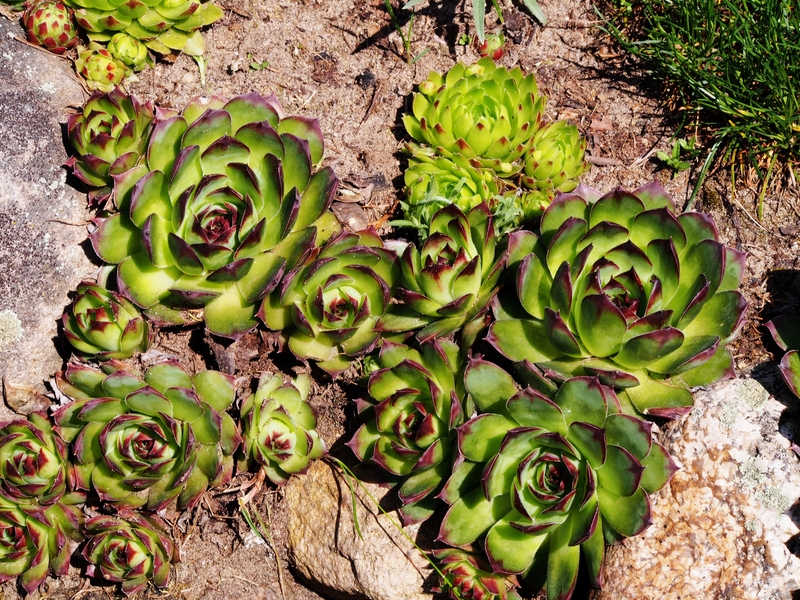Orchid Care Excellence: Nurture and Thrive
Posted on 19/05/2025
Orchid Care Excellence: Nurture and Thrive
Orchids--renowned for their extraordinary beauty and stunning diversity--have captivated plant lovers for centuries. Achieving orchid care excellence ensures not only the survival but the flourishing of these exquisite flowers in any home or garden. Whether you are a beginner or a seasoned orchid enthusiast seeking to nurture new varieties, this comprehensive guide will help you unlock the secrets of successful orchid care so your plants can thrive year-round.
Why Choose Orchids? The Allure of Orchid Plants
Before diving into best practices for orchid care, it's essential to understand why these plants remain among the most cherished indoor and outdoor blooms. Orchids are not only stunning and exotic, but they also boast remarkable longevity, resilience, and a unique ability to adapt to various environments. Many species are known to rebloom for decades, making them a rewarding long-term commitment for plant enthusiasts.
- Variety: With over 25,000 species and more than 100,000 hybrids, orchids offer a range of colors, shapes, and fragrances.
- Symbolism: Orchids symbolize love, luxury, beauty, and strength.
- Longevity: When cared for properly, orchids can bloom for weeks or even months.
Ready to take your orchid care to the next level? Let's delve into the essential aspects that drive orchid care excellence.

Understanding Orchid Varieties: Which Orchid Is Best for You?
The keys to nurturing orchids begin with knowing your plant. Different orchid species have distinct requirements. The most common and beginner-friendly choices include:
Phalaenopsis (Moth Orchid)
Phalaenopsis orchids are beloved for their resilience and long-lasting blooms. They thrive under most indoor conditions, making them perfect for beginners striving for orchid thriving.
Cattleya
Known as the "queen of orchids," the Cattleya is celebrated for its large, fragrant flowers and vibrant colors. They demand more light than phalaenopsis, but with proper attention, they bloom spectacularly.
Dendrobium
The Dendrobium genus includes a wide range of sizes and flower forms. These orchids require slightly cooler temperatures and a dry rest period, making their care unique among different orchids.
Oncidium
Nicknamed the "dancing ladies," Oncidium orchids bloom in yellow, orange, and red hues. They thrive in bright, indirect light with generous air circulation.
Regardless of which type you choose, success in orchid care is achievable with the right approach and knowledge.
The Essential Guide to Orchid Care Excellence
1. Choosing the Right Pot and Potting Mix
The foundation of thriving orchids is the right pot and substrate. Orchids naturally grow on trees--they are not potted in soil like other houseplants. Instead, they require a well-draining and airy medium such as bark, sphagnum moss, or specialized orchid mixes.
- Pot Selection: Use pots with excellent drainage (often with large holes at the bottom and sides).
- Potting Media: Bark is ideal for most epiphytic orchids. Sphagnum moss retains more moisture, suitable for varieties with higher humidity needs.
- Repotting: Repot every 1-2 years, or when potting mix breaks down, to prevent root rot and encourage new growth.
2. Providing the Ideal Light Conditions
Light is a critical factor in excellent orchid care. Too little, and orchids won't bloom; too much, and their leaves may scorch.
- Phalaenopsis: Thrives in bright, indirect sunlight--east or north-facing windows are best.
- Cattleya & Oncidium: Require more light, such as south or west-facing windows filtered with sheer curtains.
- Rule of Thumb: Leaves should be bright green (not dark or yellowish) for optimal health.
Tip: If in doubt, use an inexpensive light meter or the shadow test--soft, diffused shadows indicate ideal lighting for most orchids.
3. Mastering Orchid Watering Techniques
Watering orchids correctly is essential for healthy roots. Overwatering is the single most common cause of failure among orchid owners.
- Observe the Roots: Silvery roots indicate thirst, while green, turgid roots mean the plant is hydrated.
- Water Schedule: Water every 5-10 days, allowing the potting medium to dry out between waterings.
- Avoid Stagnation: Never let your orchid sit in water; ensure excess water drains freely.
- Humidity Trays: Place pots on trays of pebbles and water, but ensure the pot itself never stands in water.
Pro Tip: Water in the morning to allow foliage to dry before nightfall--this helps prevent rot and disease.
4. Regulating Temperature and Humidity
Orchids thrive in temperatures similar to those enjoyed by humans (65?-80?F / 18?-27?C). However, they love slightly cooler nights, which encourages blooming.
- Temperature: Maintain a 10?-15?F (5?-8?C) drop between day and night temperatures to stimulate healthy growth and flowering.
- Humidity: Orchids generally prefer 40%-70% relative humidity. Use room humidifiers or mist plants regularly during dry periods.
- Ventilation: Good air movement is vital--avoid stagnant air that encourages disease.
5. Fertilizing for Healthy Growth
Orchids are not heavy feeders, but they do benefit from regular, balanced fertilization to promote robust blooms and strong foliage.
- Frequency: Feed weakly, weekly--using a diluted, balanced orchid fertilizer (20-20-20 formula is standard).
- Flush the Substrate: Once a month, flush the potting mix thoroughly with water to prevent salt buildup.
- Budding & Blooming: Switch to a higher phosphorus content fertilizer during the blooming season to support flower production.
Advanced Orchid Care: Nurture Like a Pro
Pruning, Staking, and Grooming
Practices such as pruning spent blooms, staking flower spikes, and gently cleaning leaves can help your orchids look their best and stay healthy.
- Remove dead flowers: Cut the spike 1/4 inch above a node to encourage reblooming (especially for Phalaenopsis).
- Staking: Support tall flower spikes with soft ties to prevent breakage.
- Leaf Care: Wipe leaves with a damp, soft cloth to remove dust and pests.
Dealing With Pests and Diseases
Even with excellent orchid care, pests such as aphids, mealybugs, and spider mites can pose risks. Fungal and bacterial infections occur when air and water conditions are less than ideal.
- Inspect regularly: Examine roots, undersides of leaves, and flower buds for signs of pests.
- Natural controls: Use insecticidal soap or neem oil at the first sign of infestation.
- Isolation: Quarantine new or sick plants to prevent spreading diseases.
- Good hygiene: Always use clean, sterilized tools for cutting and transplanting.
Encouraging Reblooming: Orchid Care Mastery
One hallmark of orchid excellence is the ability to get orchids to rebloom year after year.
- Post-bloom rest: After the flowers fall, reduce watering slightly and allow the plant to rest.
- Seasonal cues: Provide a cooler, drier period in winter for species like Dendrobium.
- Patience: Some orchids may take months before sending up a new spike--do not discard healthy plants!
Orchid Care Tips for Different Environments
Growing Orchids Indoors
Most modern homes can accommodate thriving orchids with some simple adaptations.
- Supplemental lighting: In low-light homes, use LED grow lights to extend daylight hours.
- Microclimates: Group orchids together to raise humidity naturally.
- Windowsills: Rotate your plants weekly for even growth and exposure.
Orchids Outdoors: Patio and Garden Care
Many orchids flourish outdoors in tropical or subtropical climates, provided they are protected from direct midday sun and heavy rain.
- Outdoor placement: Choose shaded areas with gentle morning sun or dappled light.
- Protection: Shield orchids from strong winds, dry air, and temperature extremes.
- Rainbow misting: Use fine spray misters to boost humidity in arid regions.
Terrarium and Greenhouse Cultivation
For serious hobbyists, greenhouses and terrariums can provide precise environmental controls for rare or delicate species.
- Climate management: Install fans, heaters, and time-controlled lighting for stable conditions.
- Water management: Automated mist systems can ensure consistent moisture without overwatering.
Common Orchid Care Questions and Troubleshooting
Why are my orchid's leaves wrinkling or turning yellow?
Wrinkled leaves often indicate underwatering, while yellowing can suggest overwatering or too much direct sunlight. Assess your watering habits and adjust the plant's placement to correct these issues for ongoing orchid health.
What can I do if my orchid won't bloom?
A lack of blooms typically results from insufficient light, inadequate temperature fluctuations, or overly rich fertilizer during dormant periods. Increase light exposure, provide a cooler nighttime temperature, and use a bloom-boosting fertilizer as the season shifts.
What is the white powder or fuzz on my orchid?
This is often a sign of mealybugs or mold. Treat your plant promptly with insecticidal soap or by removing affected areas with a sterile cloth. Boost air circulation and reduce excess moisture to prevent recurrence.

Benefits of Achieving Orchid Care Excellence
Cultivating orchids to thrive is more than just an aesthetic endeavor. It promotes mindfulness, patience, and fosters a nurturing spirit. The vibrant blooms, refreshed spaces, and blooming cycles offer joy and satisfaction. Additionally, orchid culture connects people globally, trading knowledge and rare species with a community of passionate growers.
- Improved air quality and humidity at home
- Therapeutic stress relief from nurturing living plants
- Opportunities for lifelong learning and skill improvement
Conclusion: Start Your Journey to Orchid Care Excellence Today
Achieving orchid care excellence is a fulfilling and rewarding hobby, offering continuous blooms and a sense of accomplishment. By understanding the unique needs of your orchid species and following proven techniques for watering, lighting, feeding, and repotting, anyone can nurture their orchids to thrive. Remember--patience is key, and each orchid will teach you more about the wondrous world of these exceptional plants.
If you're ready to transform your home into a lush orchid oasis, apply the strategies in this guide and relish the artistry of orchid nurturing. Share your success stories, connect with fellow enthusiasts, and let your orchids thrive for years to come!
Nurture your passion. Cultivate excellence. Let your orchids thrive!

